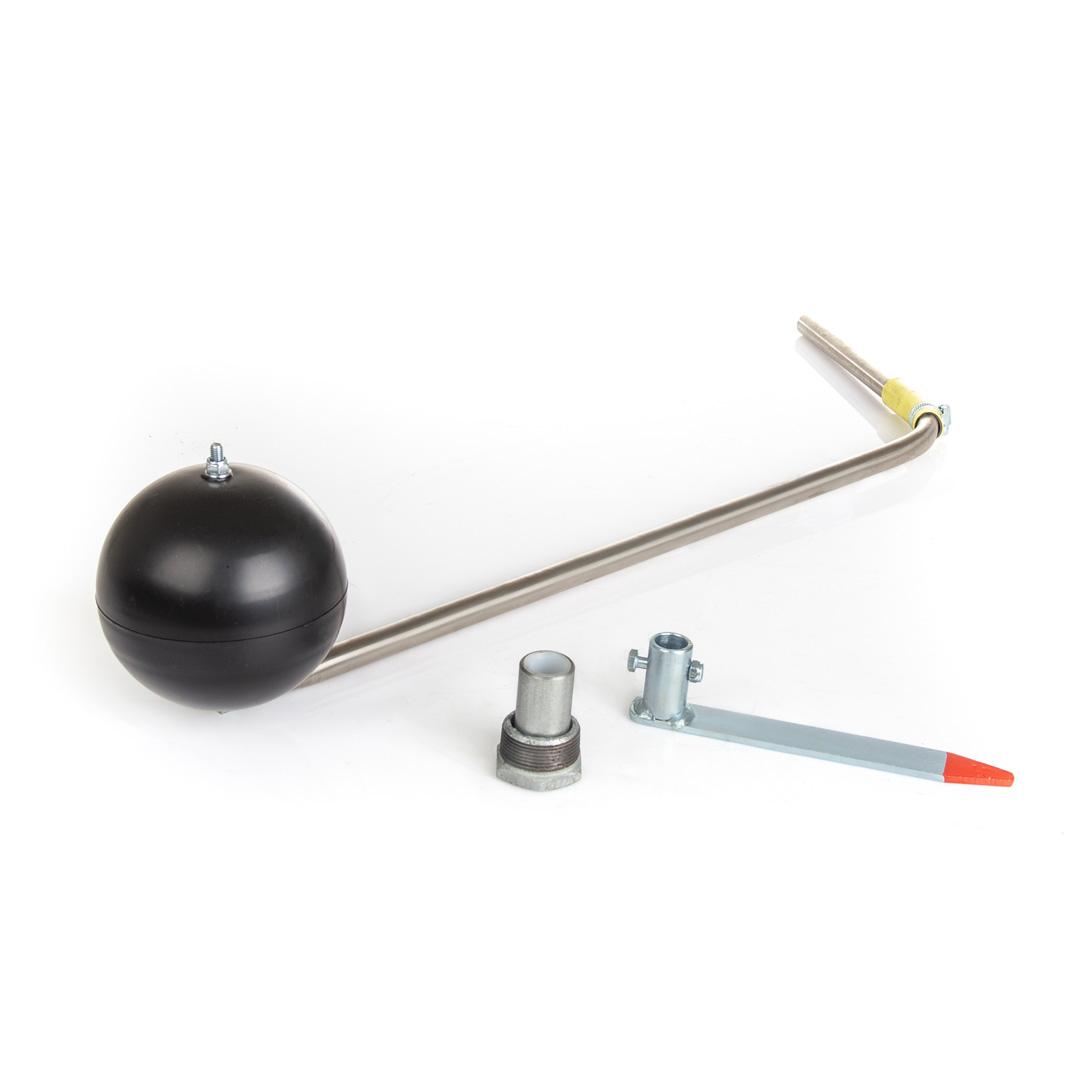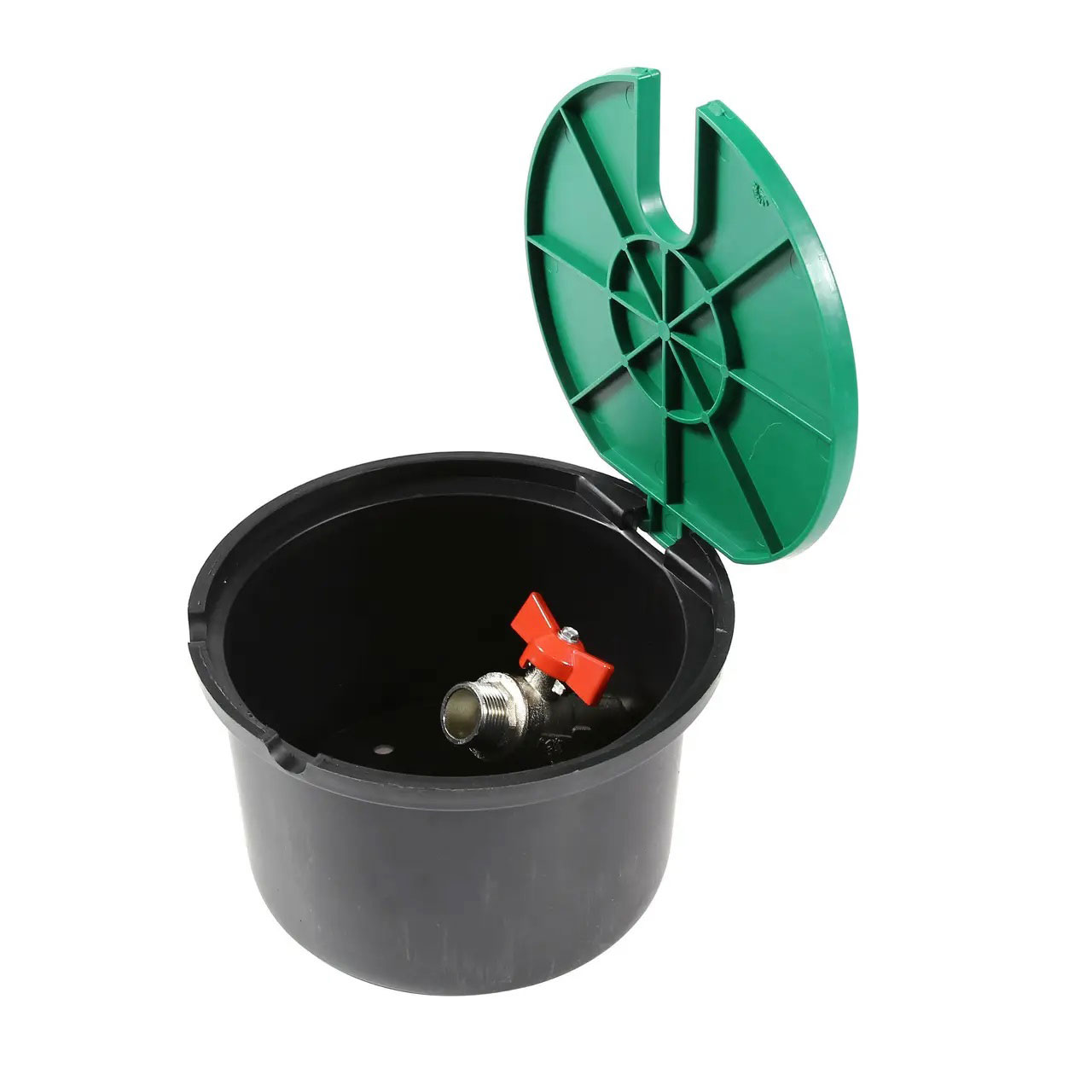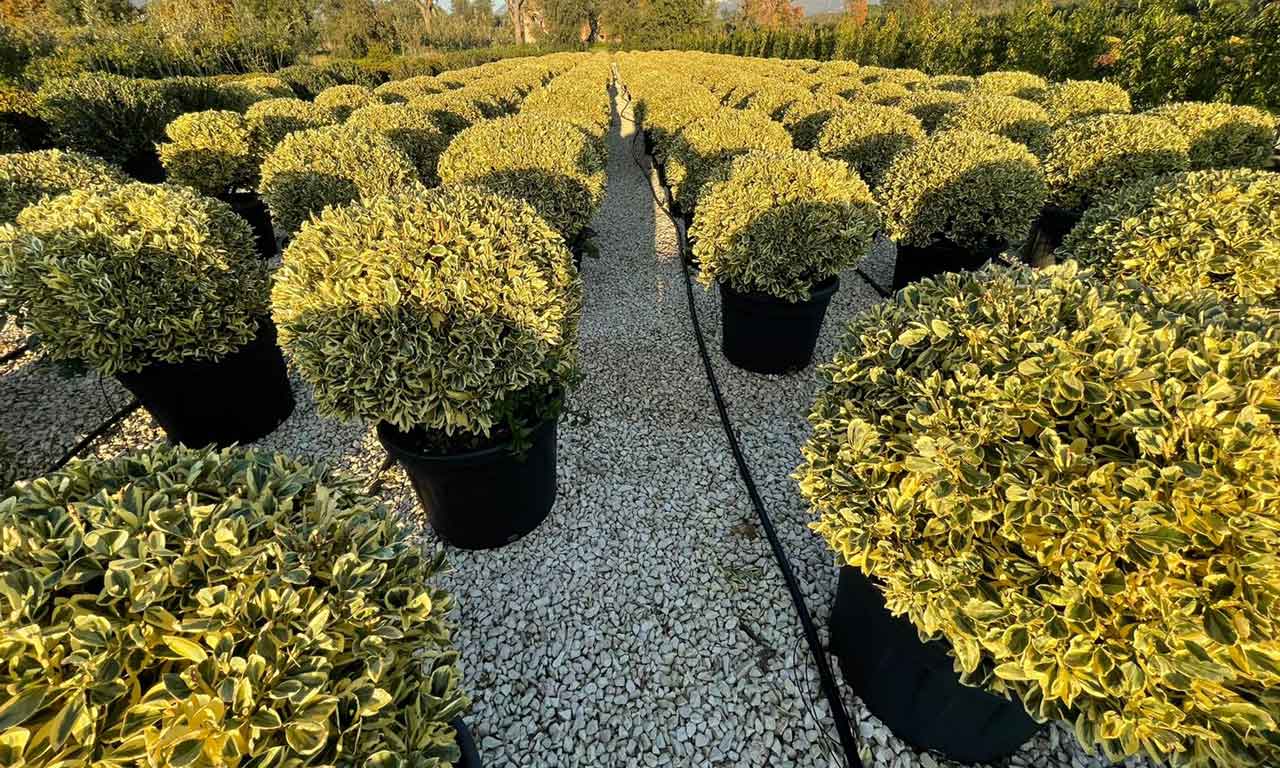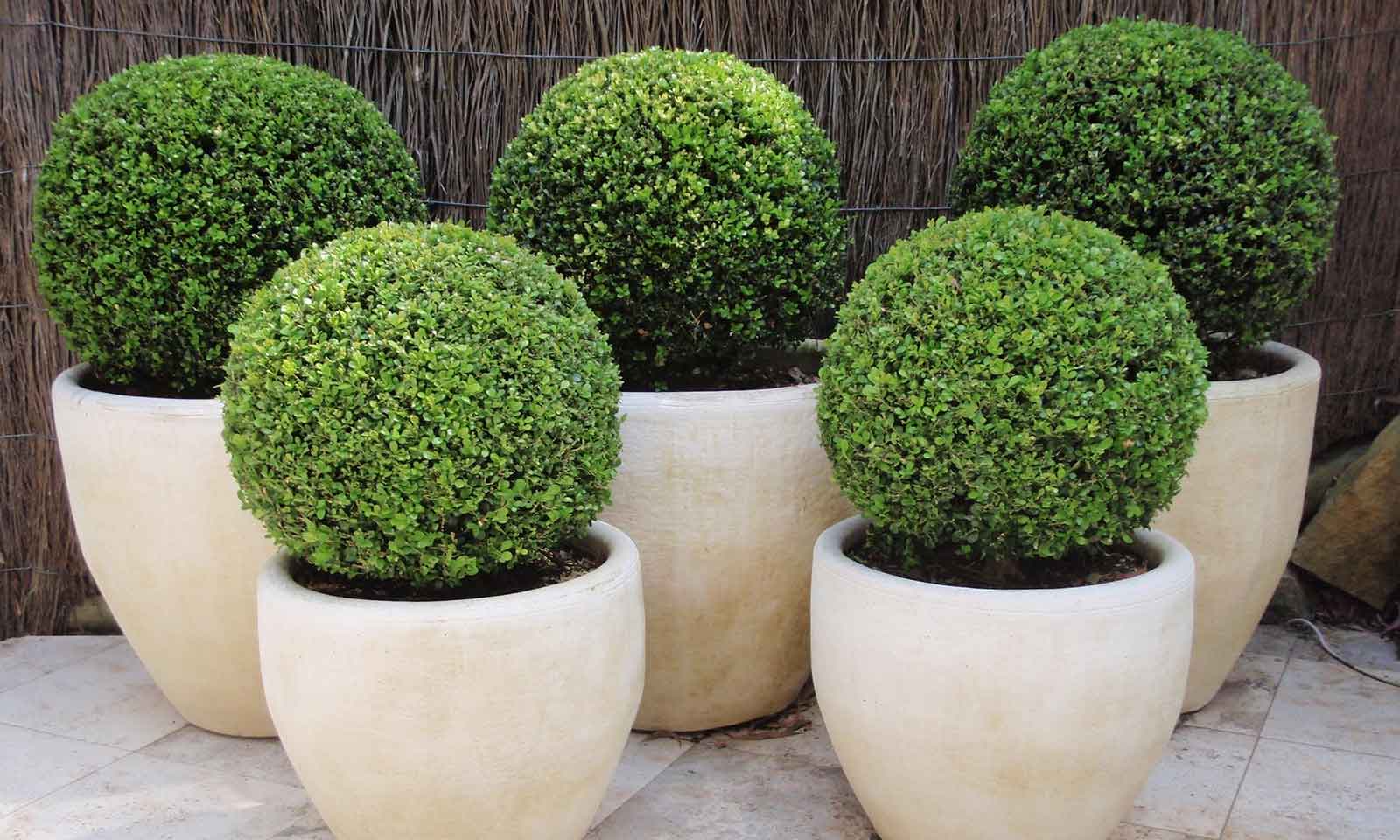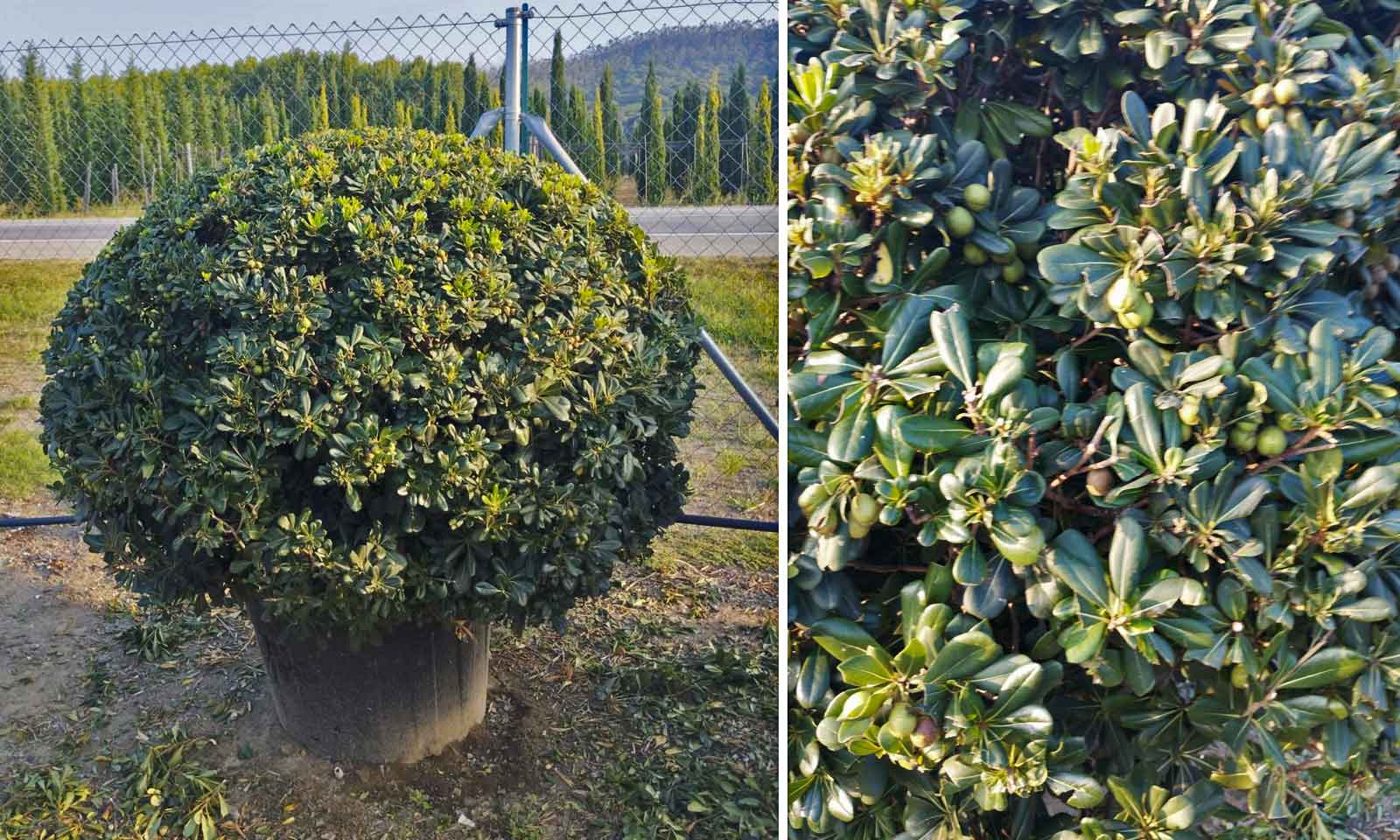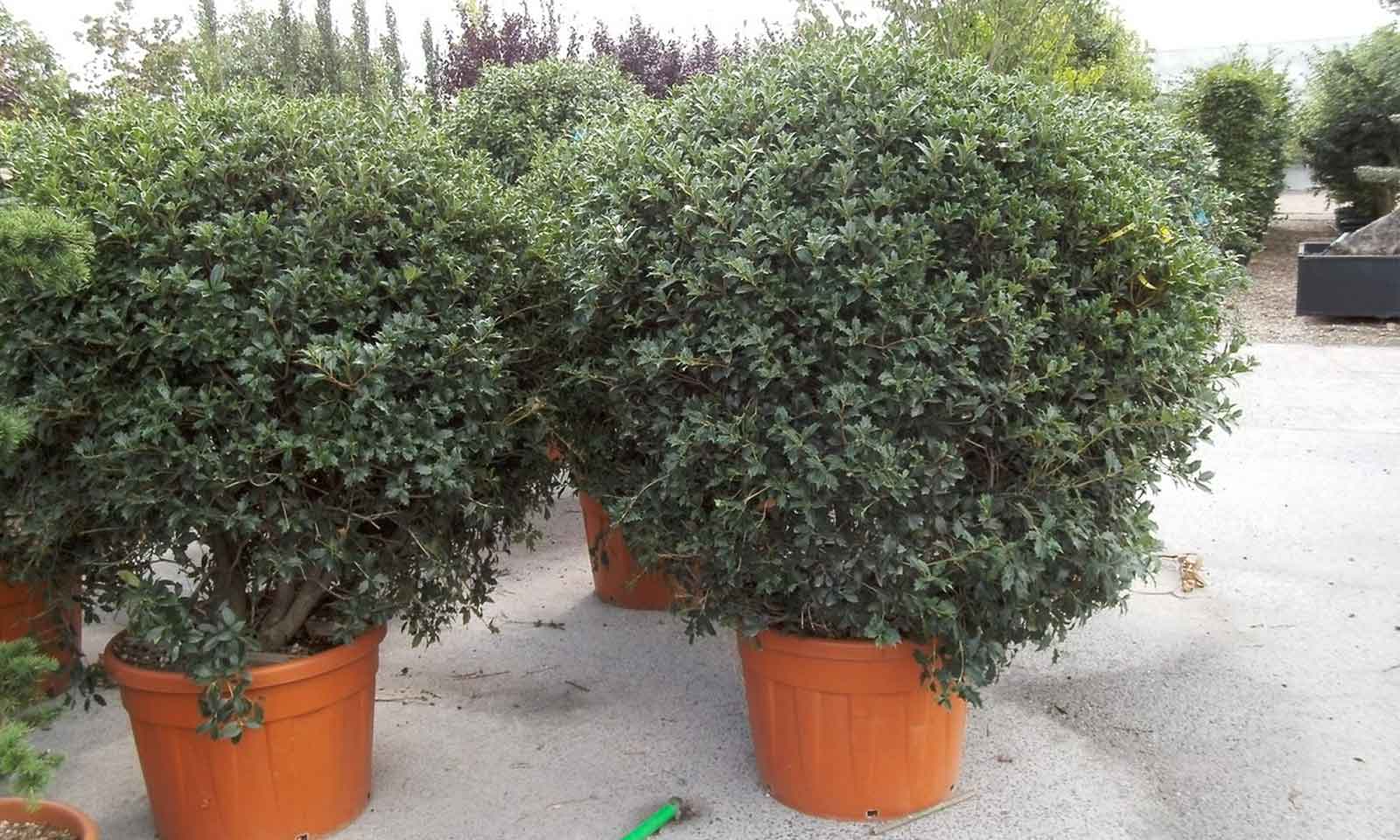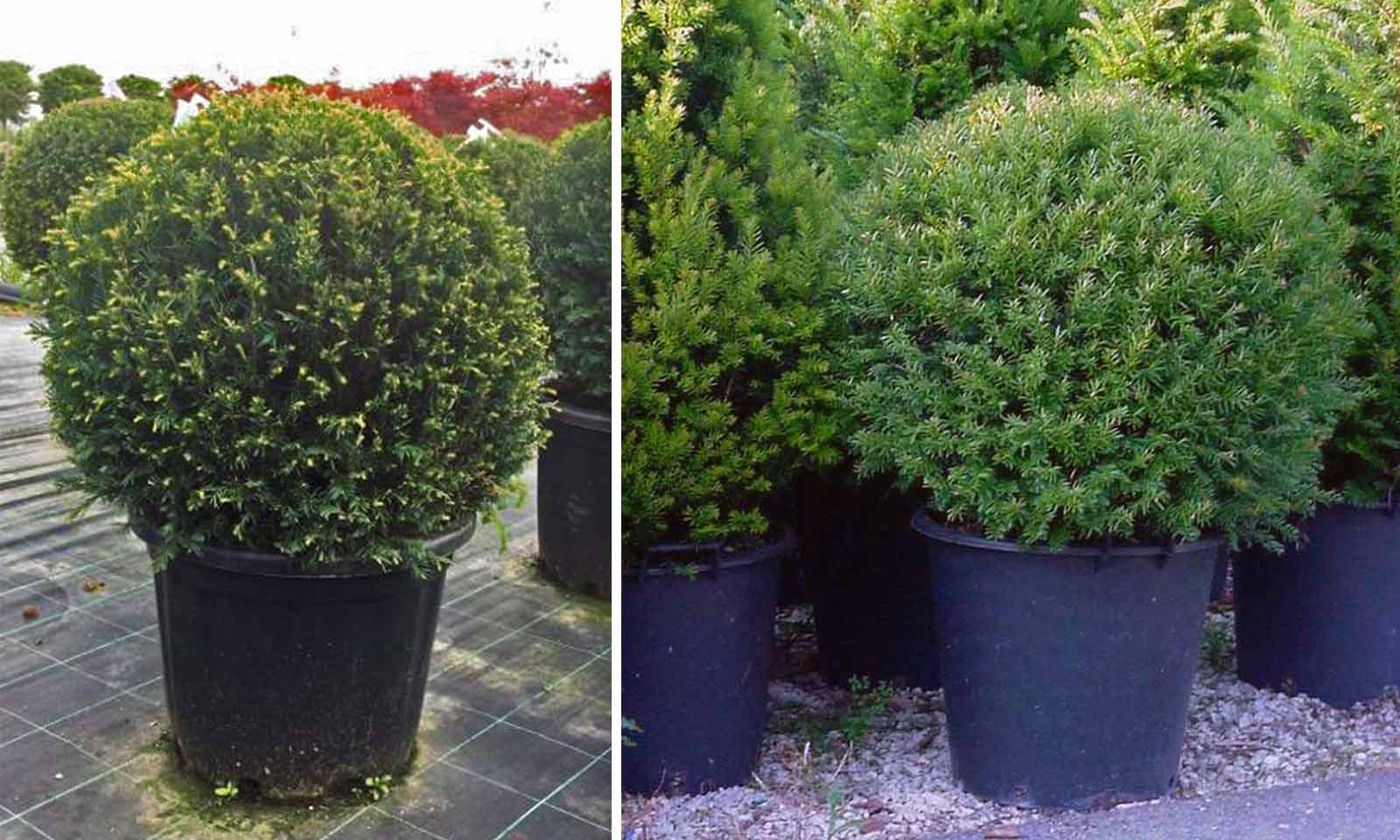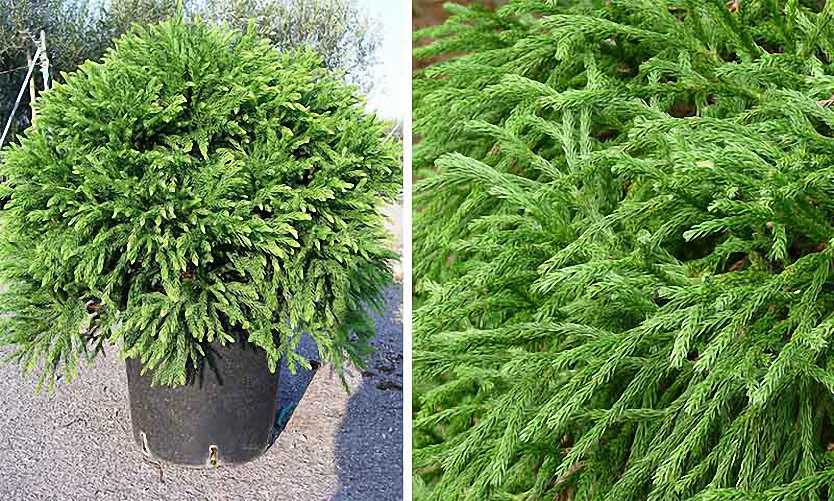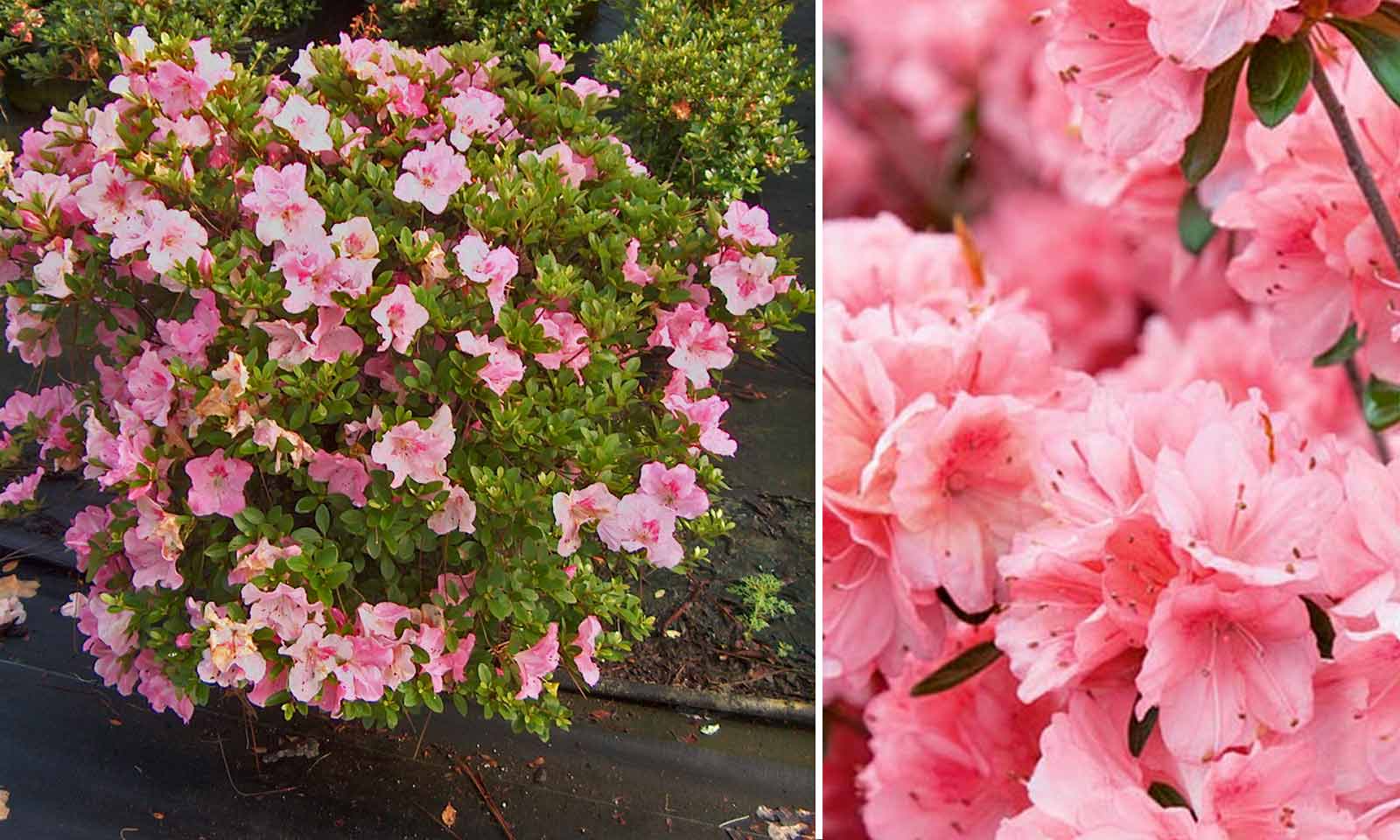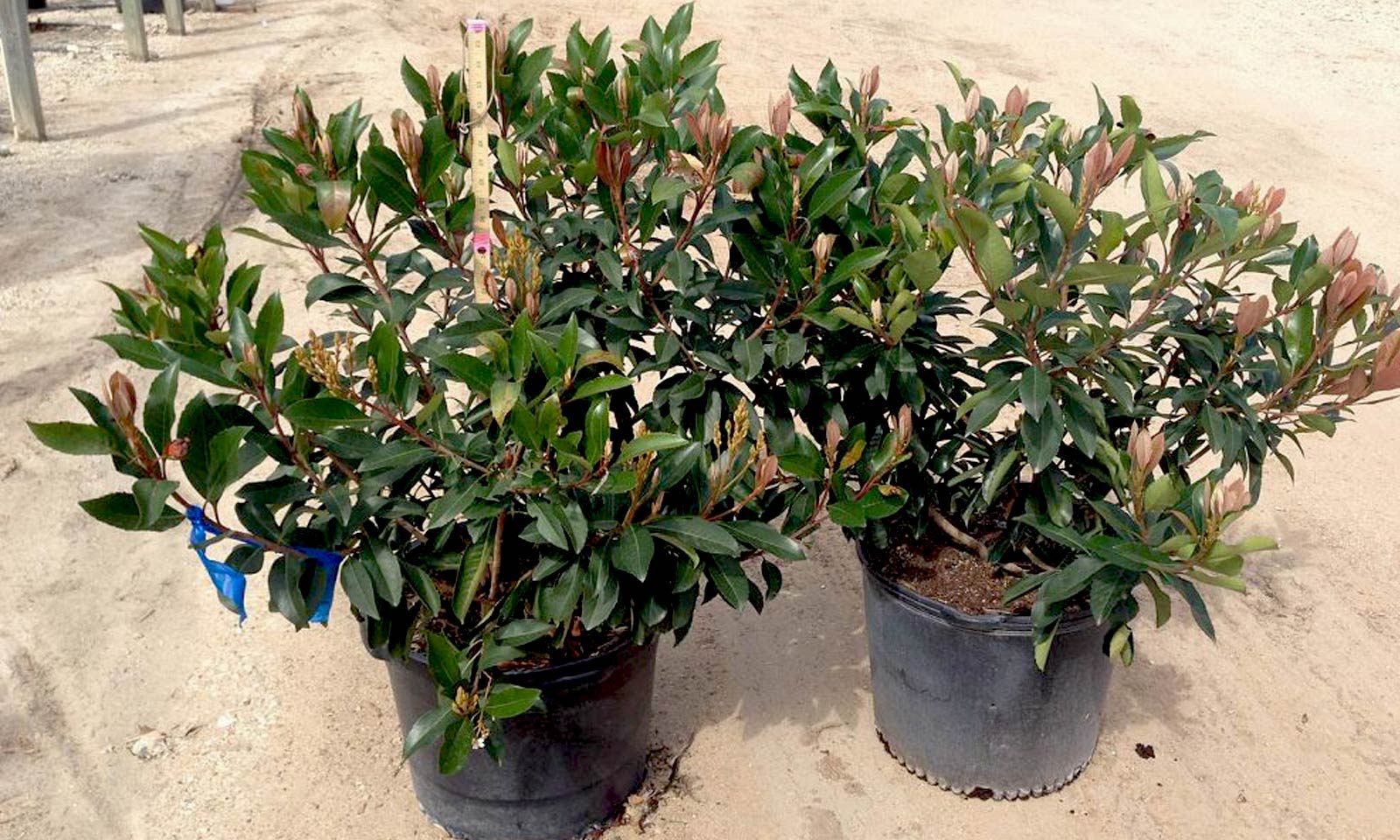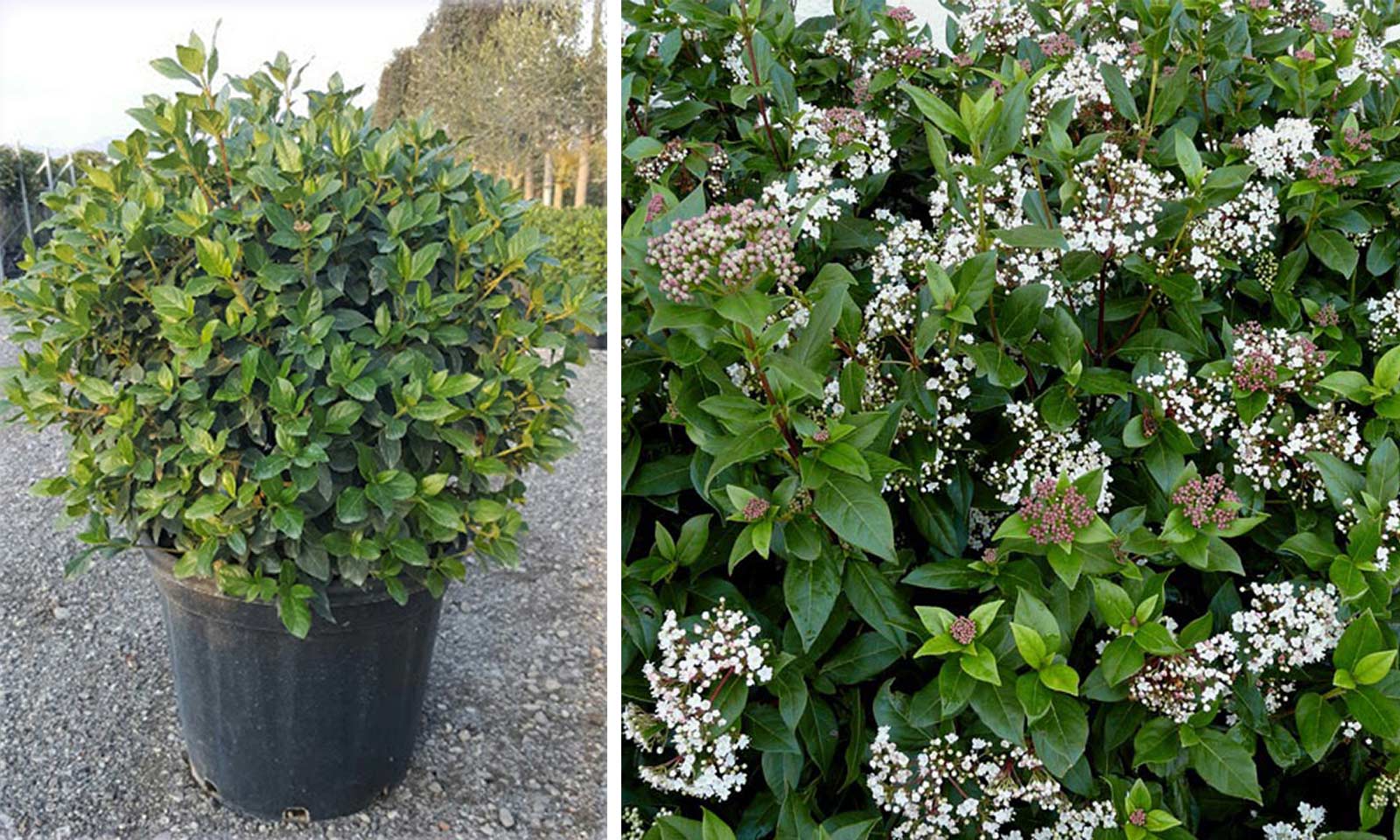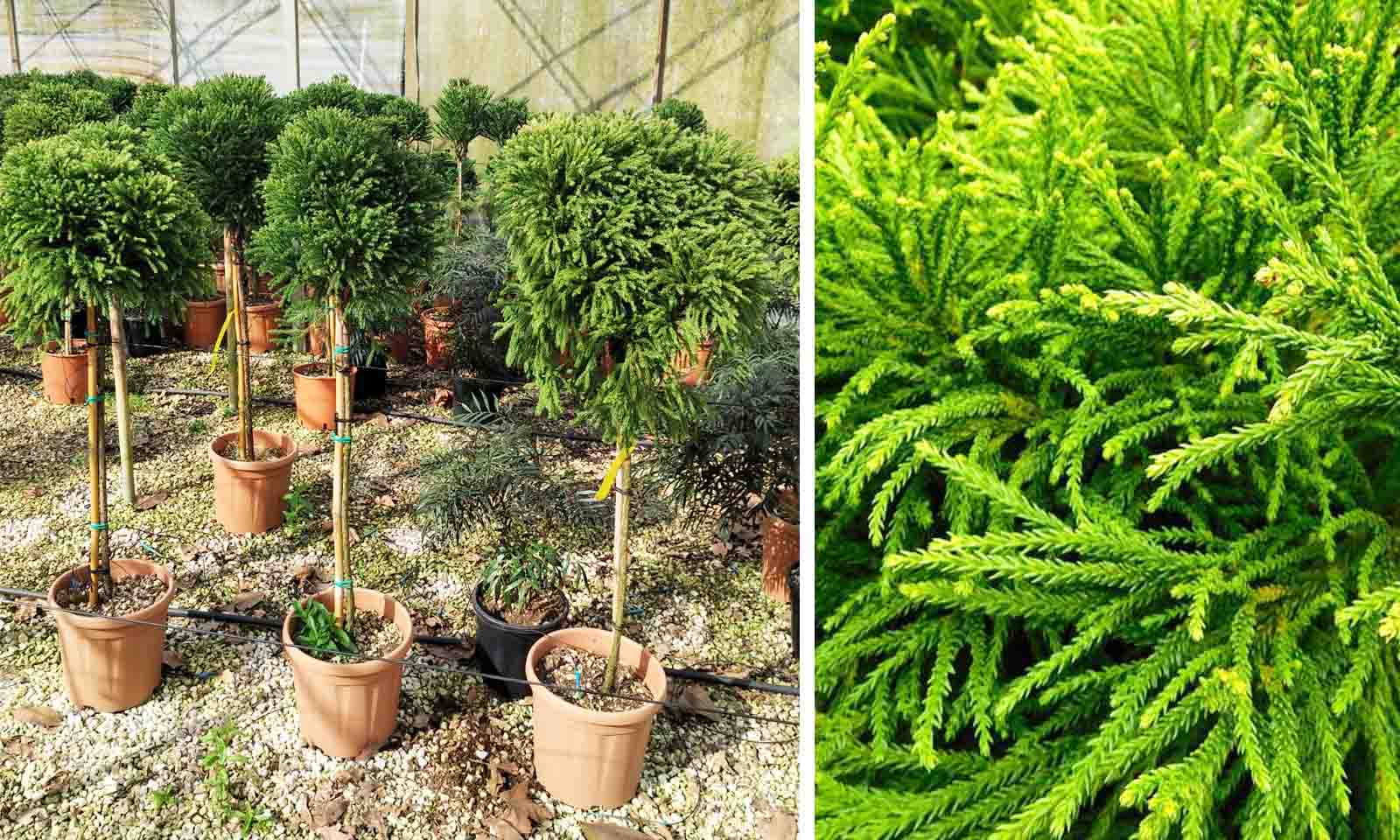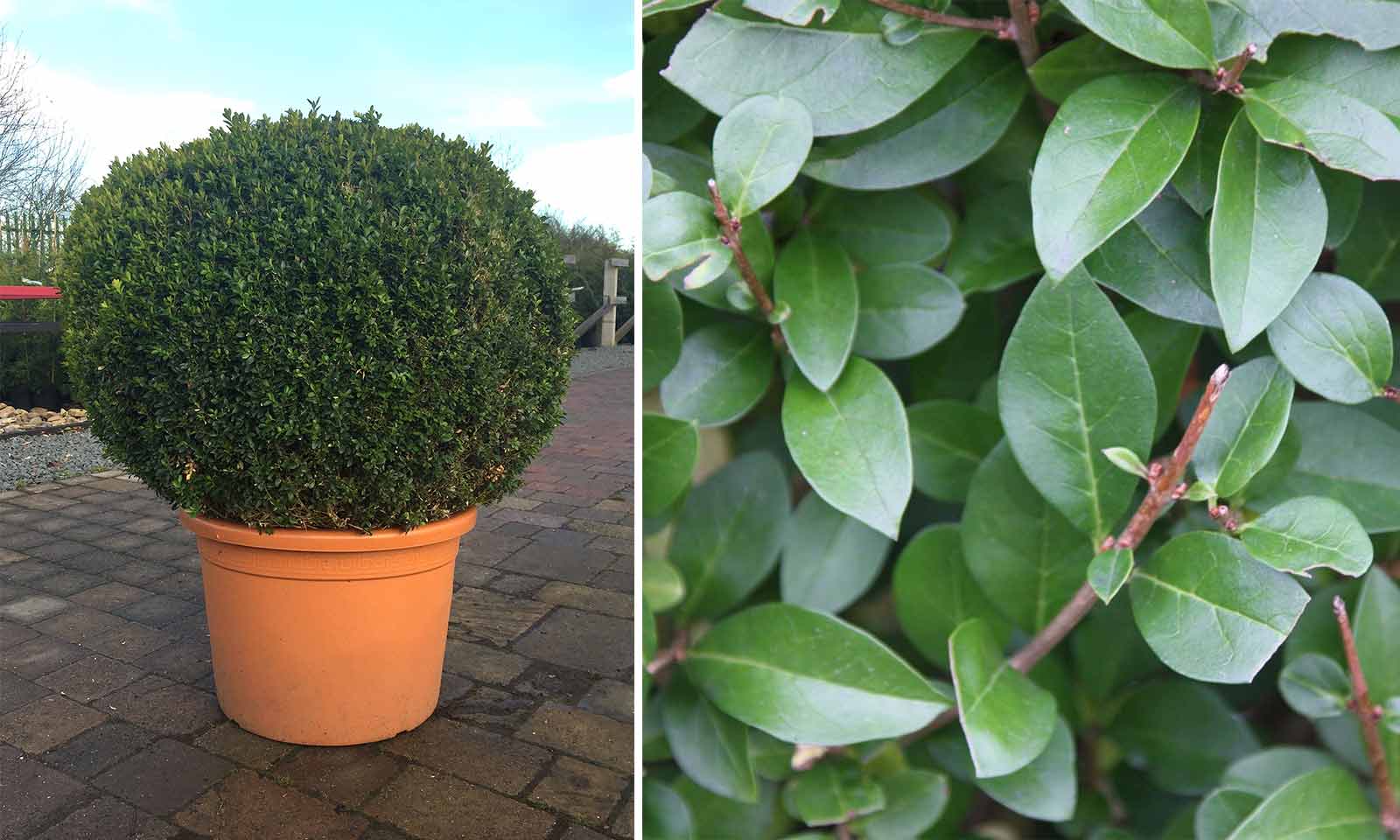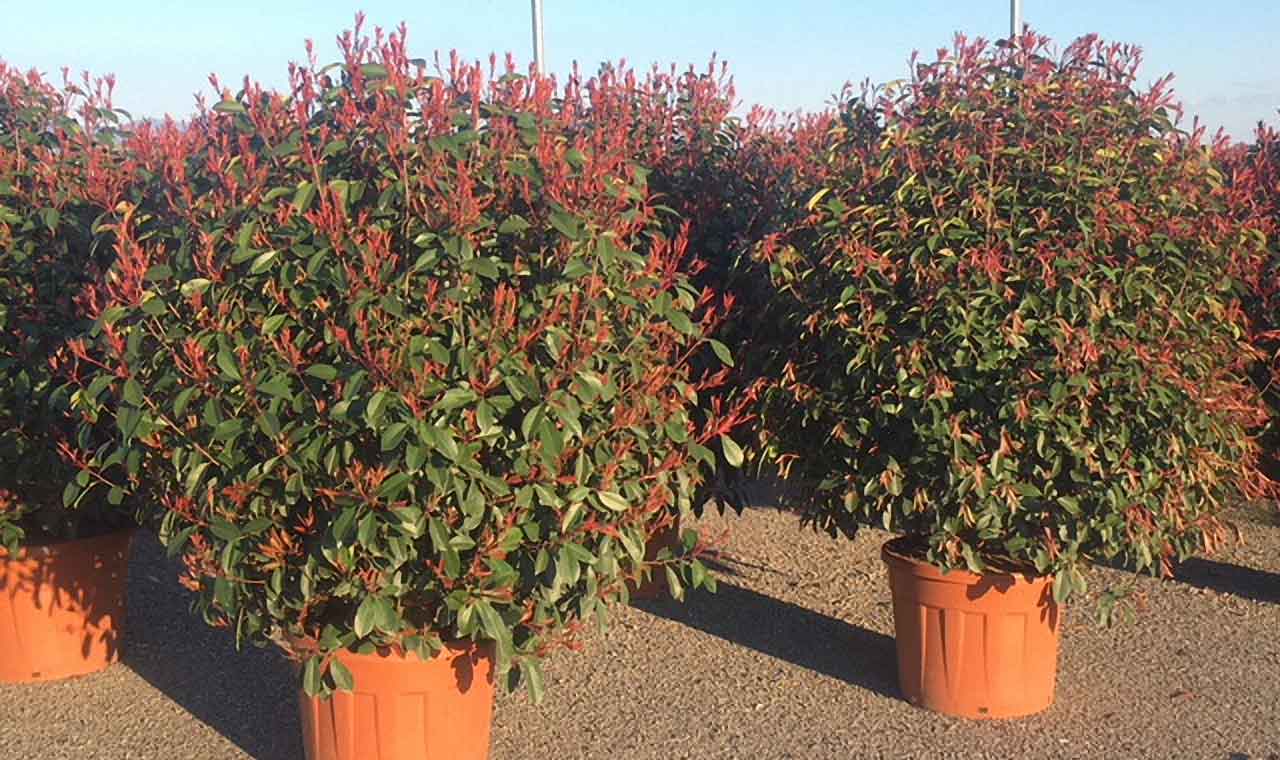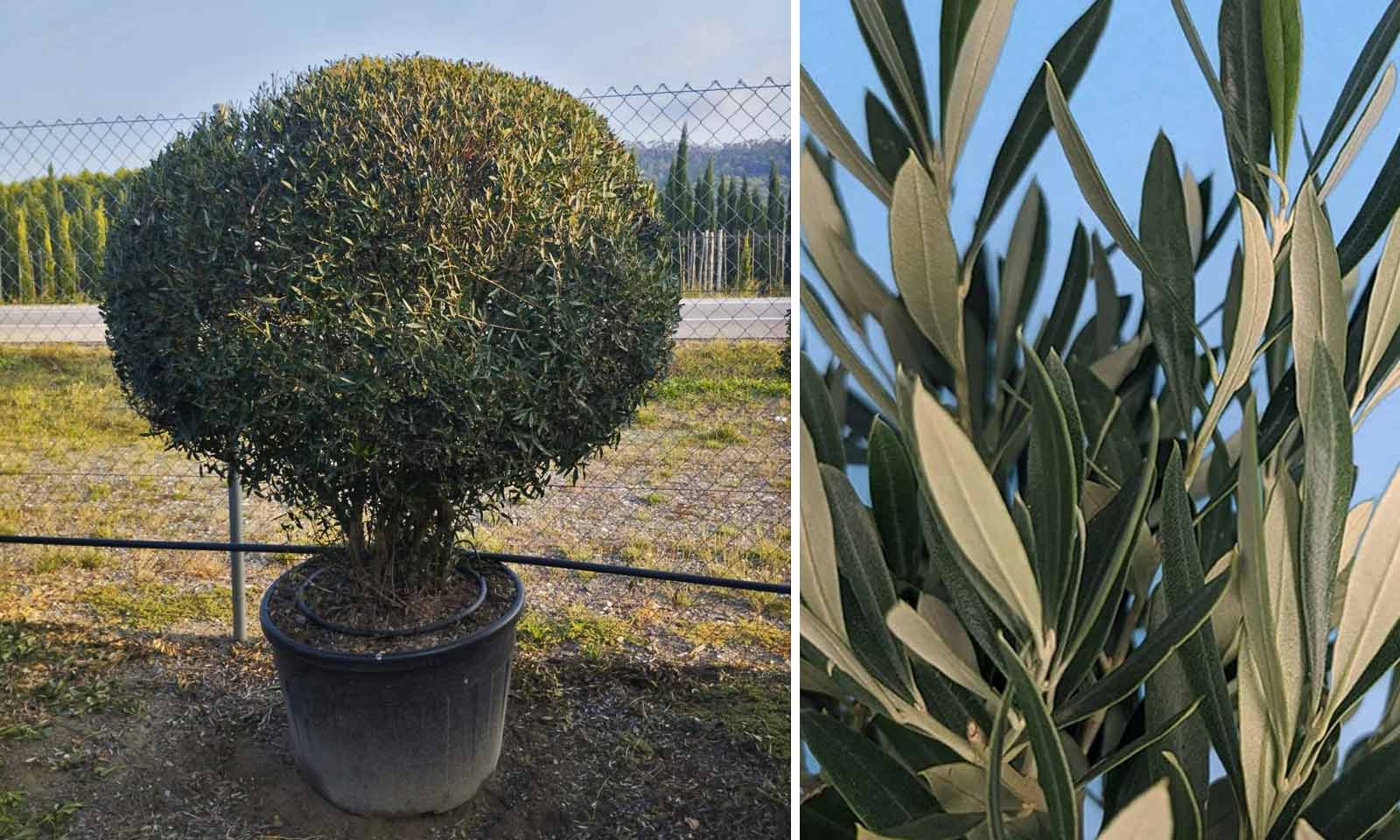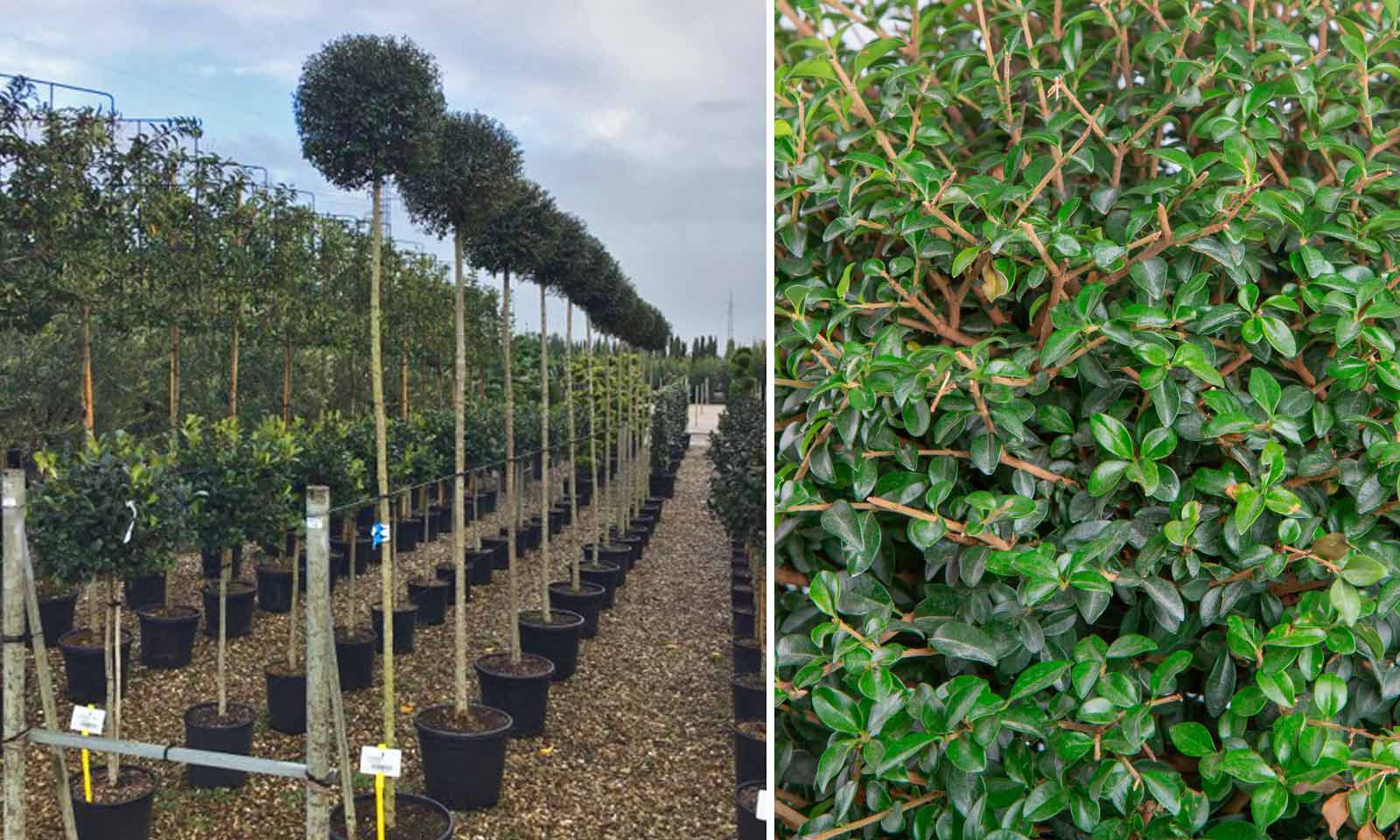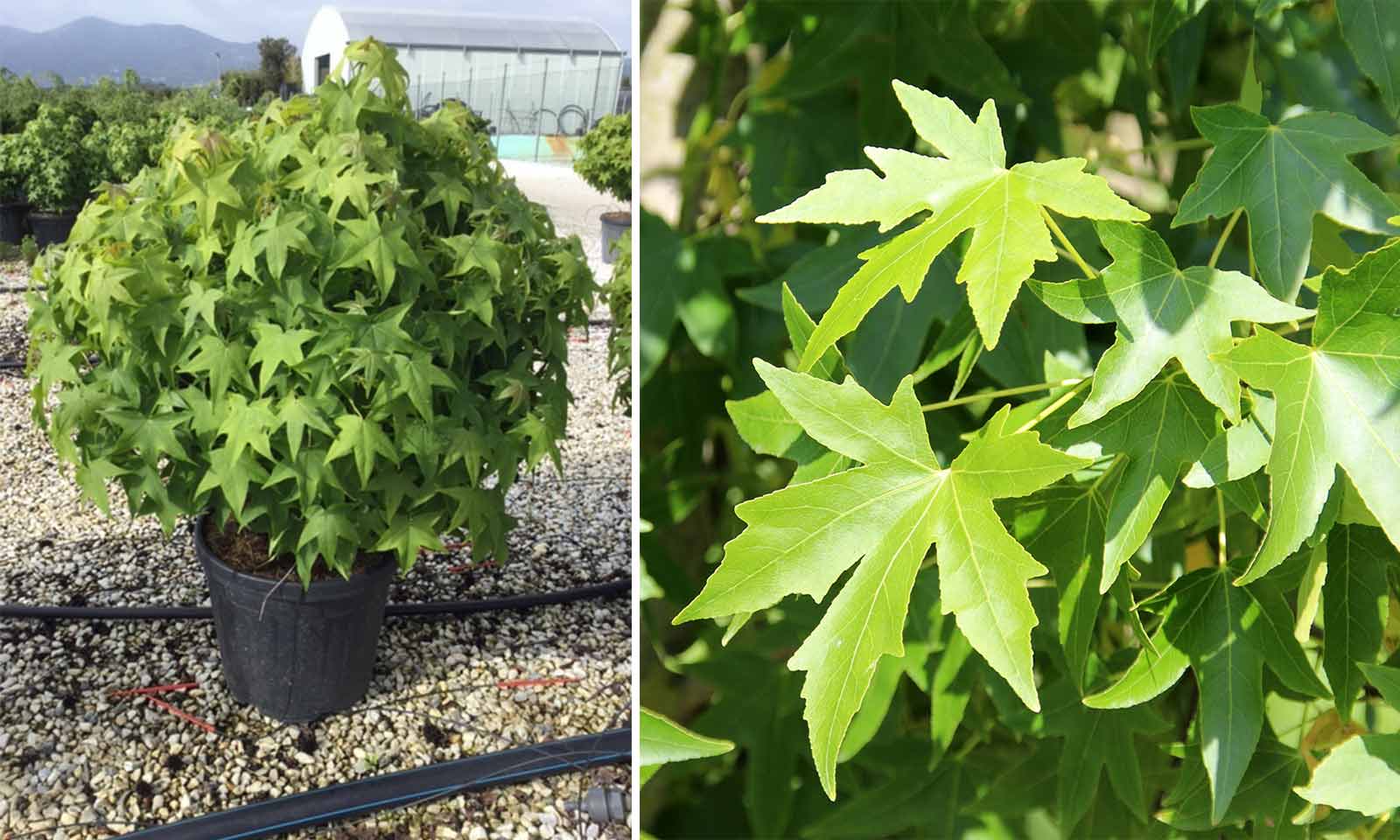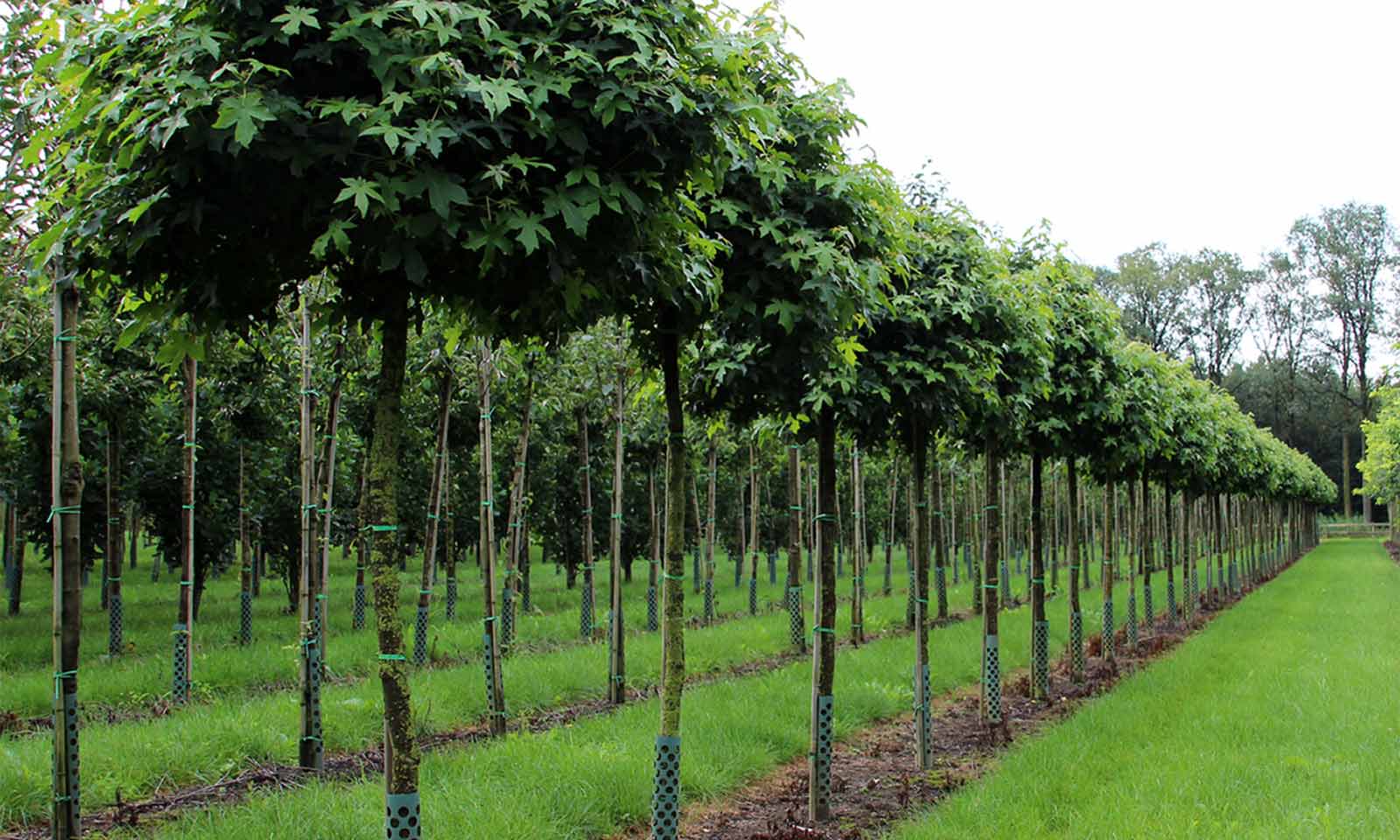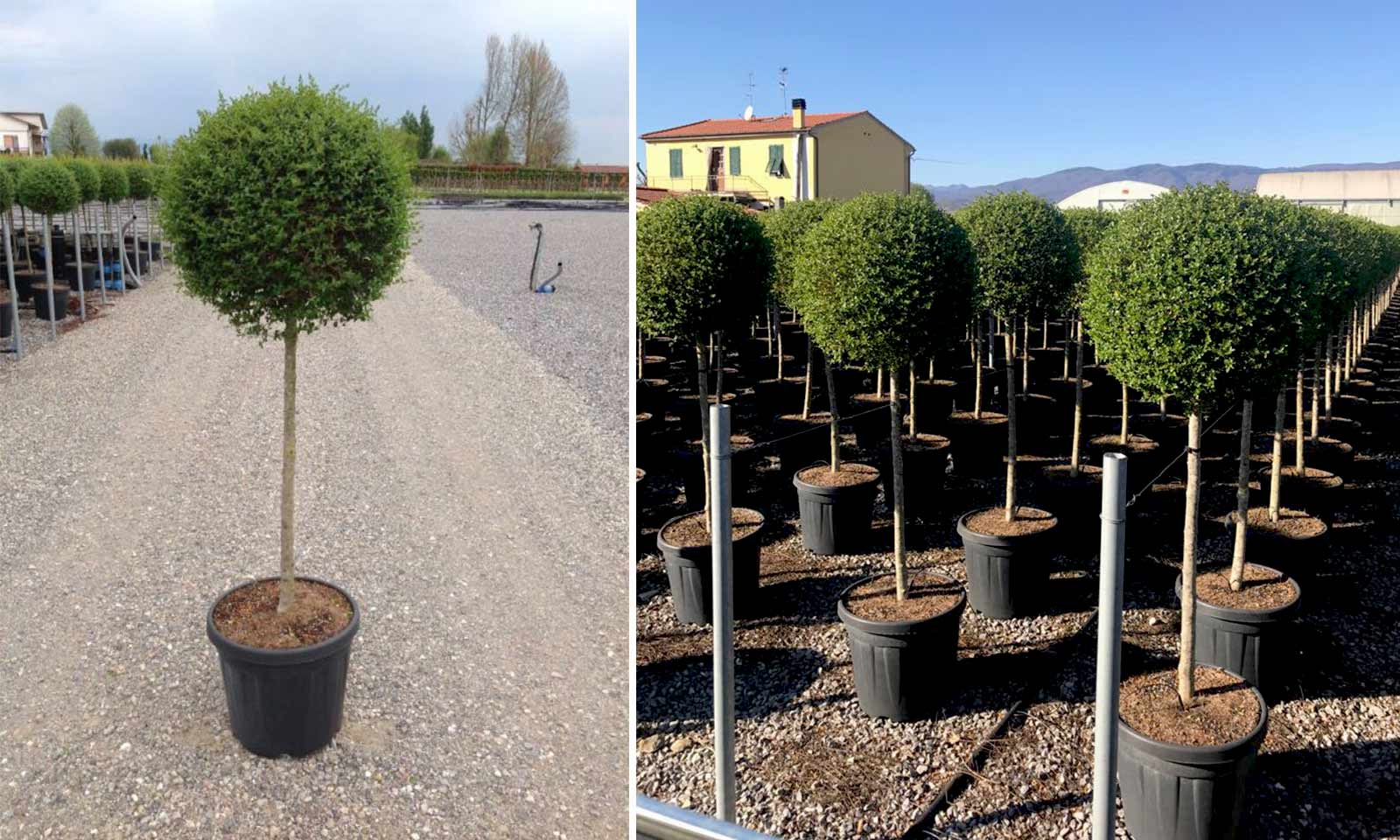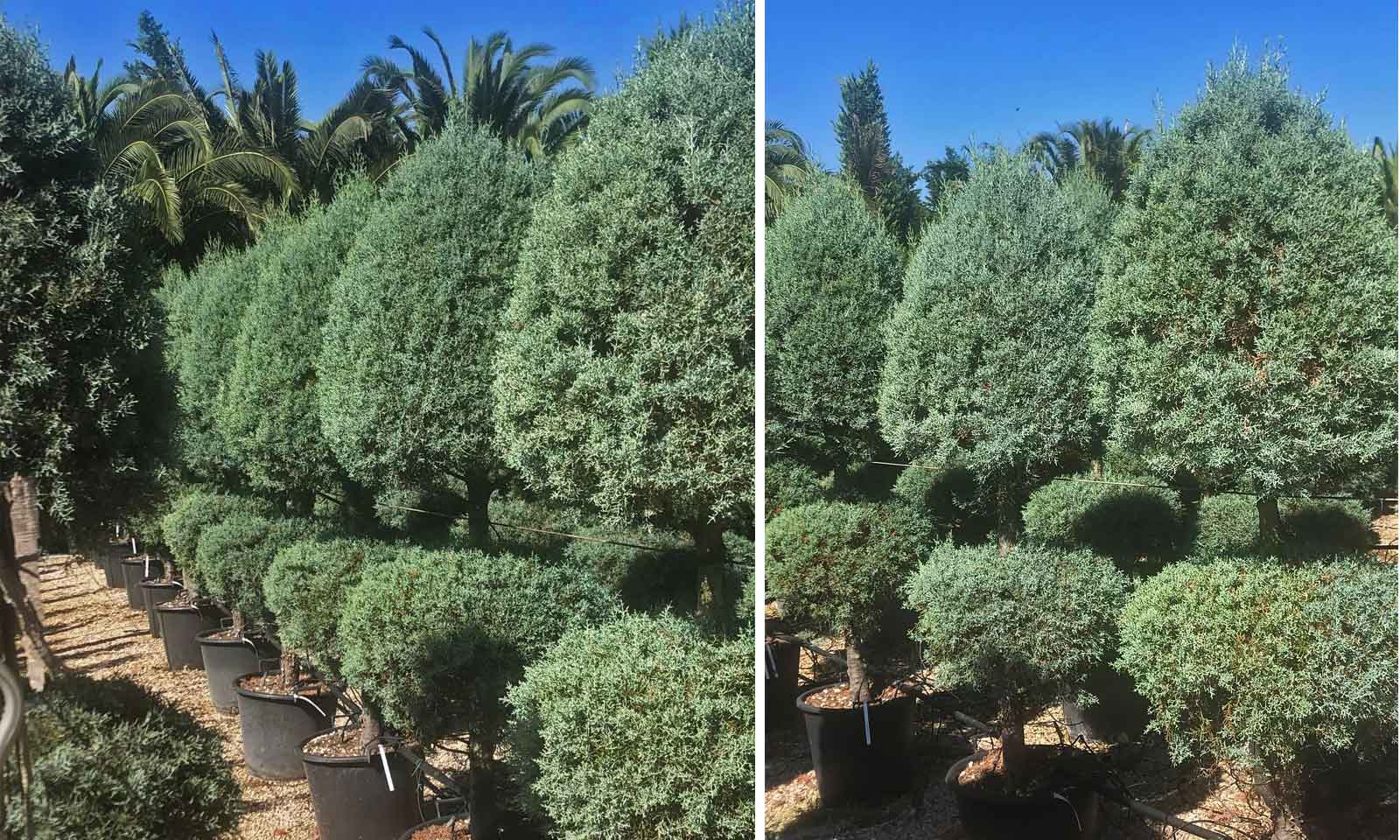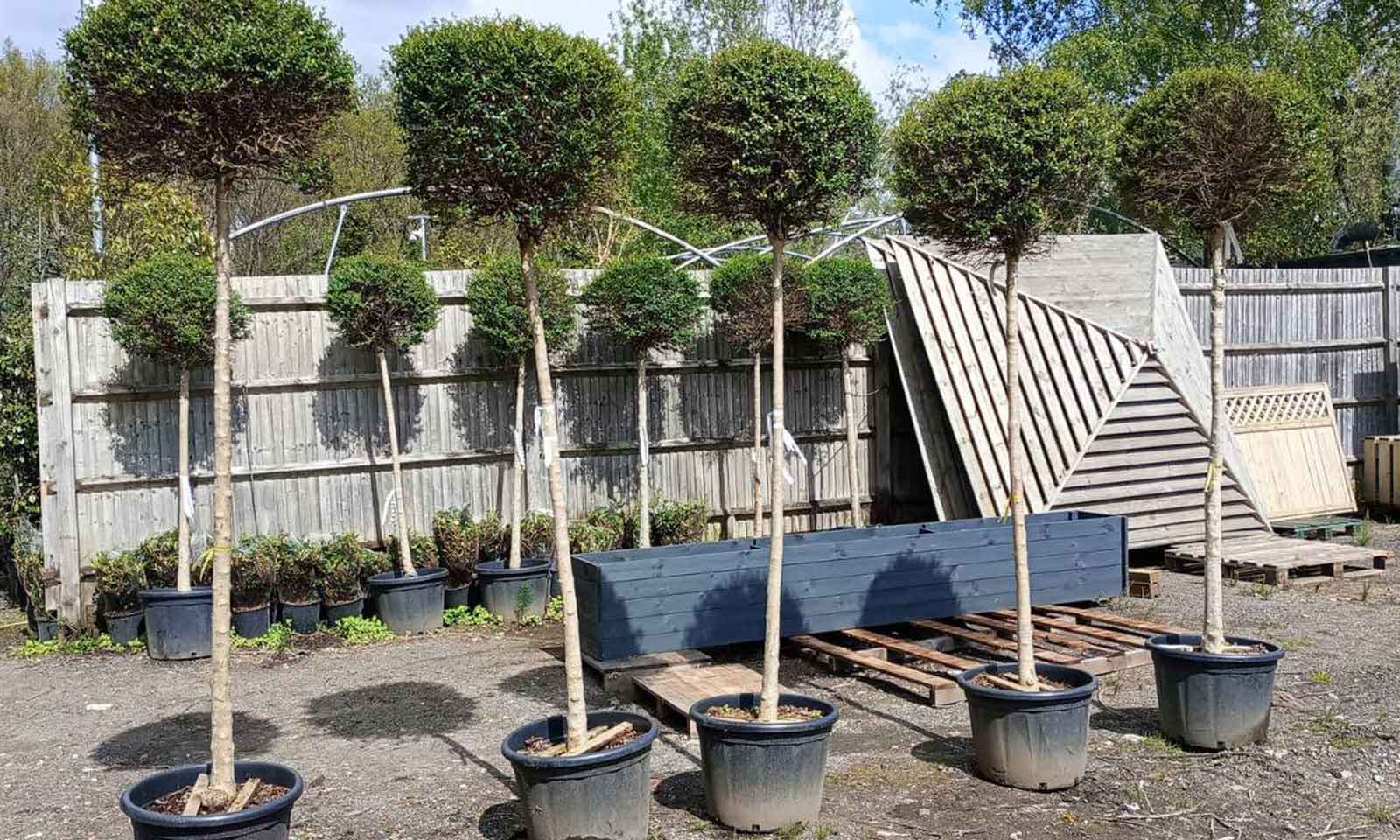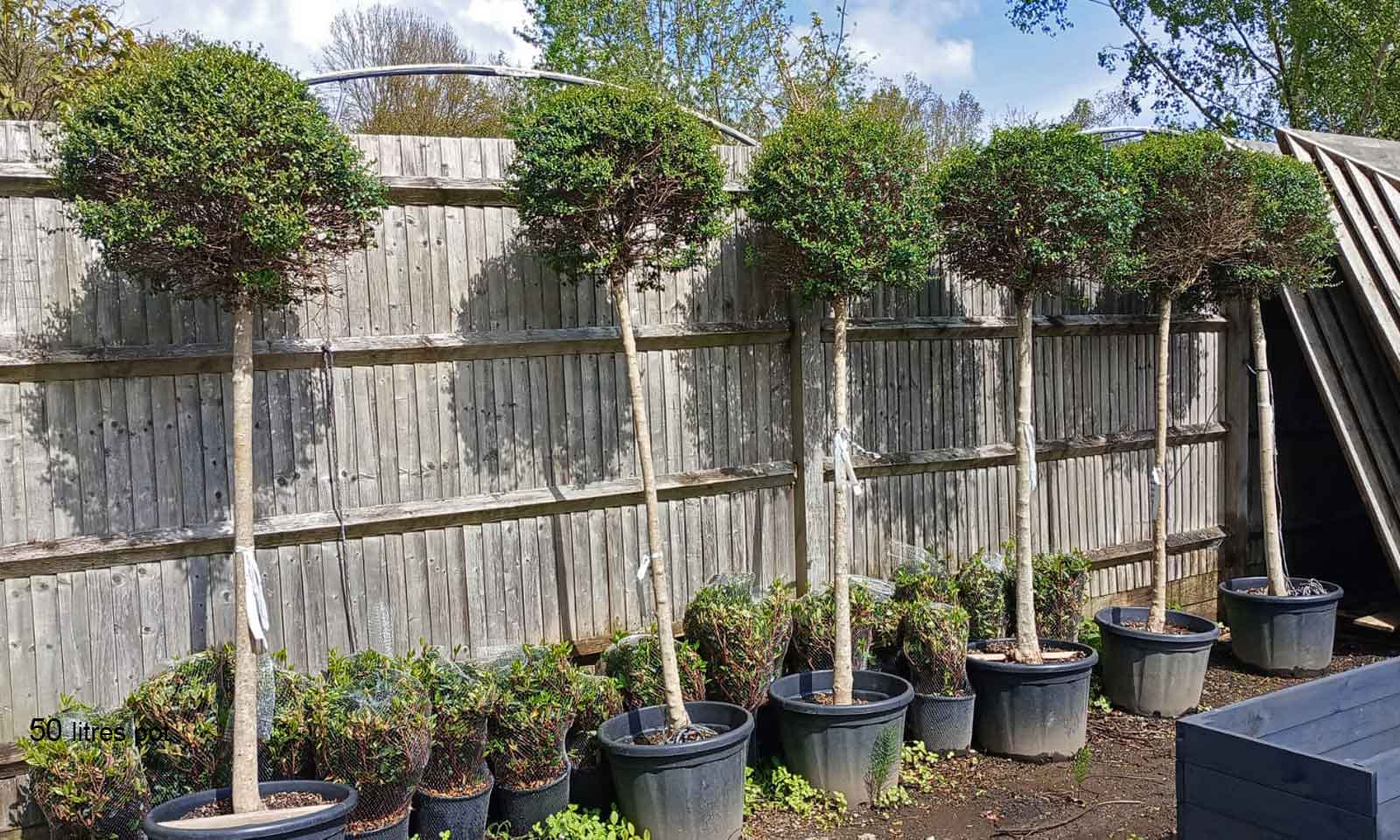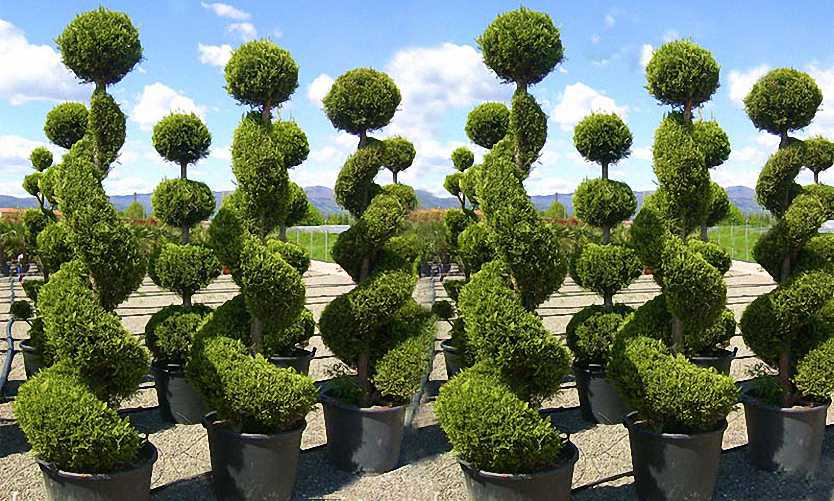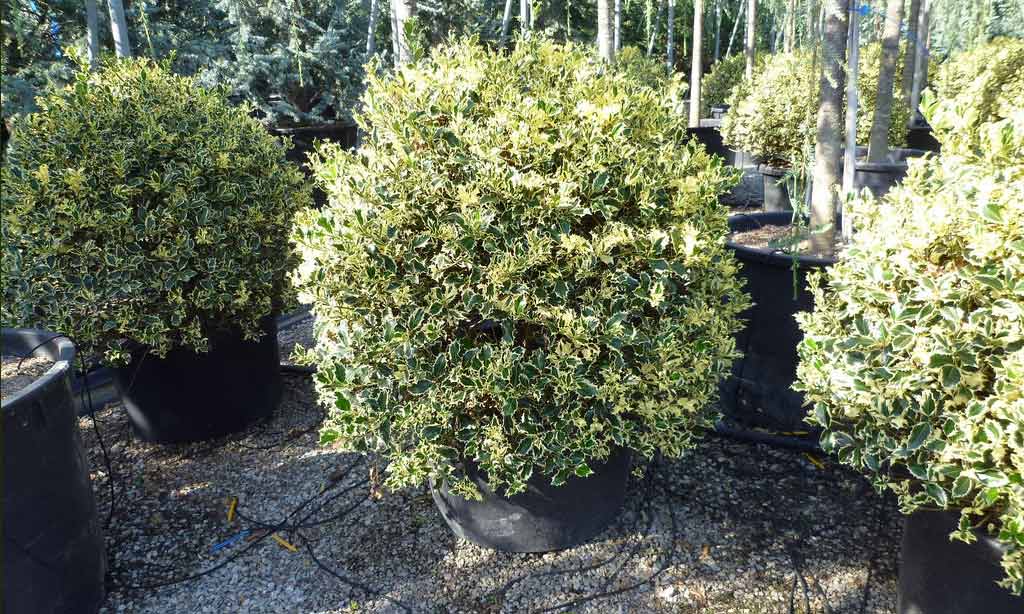Pittosporum Tobira Nanum (Dwarf Japanese Mock Orange) – Ball
Pittosporum Tobira 'Nanum' (Dwarf Japanese Mock Orange) – Ball is a compact, evergreen shrub known for its dense, rounded form and fragrant white flowers. 'Nanum' is a dwarf variety of the Pittosporum tobira, growing to about 2–3 feet (60–90 cm) tall and wide. It forms a compact, ball-shaped mound, making it an excellent choice for low hedges, border plantings, or as a decorative topiary. The leaves are glossy, dark green, and leathery in texture, creating a dense, tidy appearance. The foliage is smaller than the typical Pittosporum tobira, contributing to its more compact form. In late spring to early summer, 'Nanum' produces small, fragrant, white flowers that resemble orange blossoms, giving the plant its common name "Mock Orange." The flowers have a sweet, citrus-like fragrance, attracting pollinators like bees and butterflies. The plant is slow-growing and maintains its compact shape with little pruning. It can be used to create formal, rounded shapes, or left to grow naturally.
Latin Name: Pittosporum Tobira Nanum
English Name: Dwarf Japanese Mock Orange, Japanese Cheesewood
Species: Pittosporaceae
Genus: Pittosporum
Foliage Type: Evergreen.
Foliage: Green
Fragrance: Flower
Flower: White-Yellow
Flowering Period: Spring-Summer
Suggested Location: Outdoor.
Suggested Soil Type: Moist but well-drained. Loam, Chalk, Sand
Suggested Exposure to Sunlight: Full Sunlight or Partial Shade
Suggested Exposure to Weather: Sheltered
Hardiness Rating: Low (H3)
Lowest Temperature Tolerance: -5°C to 0 °C (43 °F to 52 °F)
Growth Habit: Bushy
Cultivation: Grow outdoors in moist but well-drained soil in full sun. Protect from cold drying winds. Grow under glass in loam-based compost in full light
Propagation: Propagate by semi-hardwood cuttings
Suggested planting locations and garden types: Hedging & Screens Low Maintenance Drought Resistant Mediterranean Climate Plants City & Courtyard Gardens
Pruning: Pruning group 1
Pests: Can get glasshouse red spider mite, aphids, cushion scale and pittosporum sucker
Diseases: May be subject to powdery mildews
Final Height: 60 cm – 90 cm (1.9 ft – 2.9 ft)
Final Spread: 60 cm – 90 cm (1.9 ft – 2.9 ft)
Delivery Cost: This is calculated based on the total size, weight and quantity of your order, as well as the location of your delivery address. You will see the final price at the Online Checkout Page (before making payment) – our website will automatically calculate the lowest possible delivery price and apply discounts to orders of certain products – giving you the best value delivery every time!
Please note that high-volume orders will decrease your delivery costs significantly by spreading the price across multiple items. Visit our Delivery Policy page for more information.
